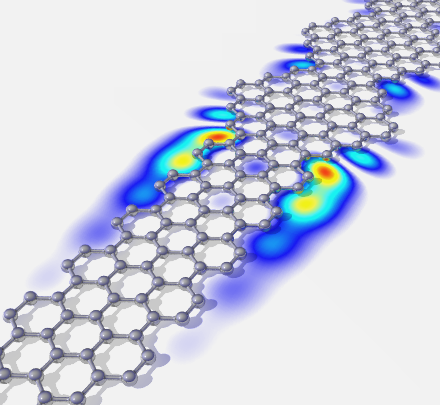
Welcome to the nanotech@surfaces Laboratory, a research section of the Swiss Federal Laboratories for Materials Science and Technology (Empa). We are a highly motivated team of physicists and chemists dedicated to develop and characterize novel functional materials and devices based on nanoscale surface effects. Using a close combination of experimental and computational approaches, we aim at a fundamental understanding of the structural and electronic properties of low-dimensional nanostructured materials and systems, and at establishing a rational basis for their application in next generation technologies.
Our main competences – surface physics and chemistry – are located within the realm of fundamental research, but we have a long tradition of developing basic research results into real-world technological applications. It is part of our mission to assist internal and external partners in technology development with our know-how and experience. To this end, we collaborate with academic and governmental research labs and industrial companies worldwide.
We are organised in five groups that cover research topics such as carbon nanomaterials, quantum magnetism, 2D quantum materials and chiral surfaces, both from an experimental point of view and via atomistic simulations as well as in terms of device applications. Our research interests cover a wide range of topics at the interface of materials science, surface physics and chemistry, with a particular focus on low-dimensional organic & carbon-based materials. We follow different experimental approaches, but with a core activity on surface physical and chemical investigations, in particular by means of scanning probe techniques (STM/STS/nc-AFM) and photoelectron-based methods such as XPS, ARPES and XPD, complemented by theory and atomistic simulations. Within a transversal research project, we are currently focusing on the development of a carbon-based nanomaterials platform for next-generation quantum technology applications.
Latest Publications
Evidence of spin and charge density waves in Chromium electronic bands
F. Bisti et. al, Commun. Mater. 6, 70 (2025). DOI: 10.1038/s43246-025-00789-0
Efficient Blade-Coated Wide-Bandgap Perovskite Solar Cells via Interface Engineering
J.K. Pious et. al, ACS Appl. Mater. Interfaces 17, 24040 - 24047 (2025). DOI: 10.1021/acsami.5c03709
Coupling of Nondegenerate Topological Modes in Nitrogen Core-Doped Graphene Nanoribbons
P. H. Jacobse et. al, ACS Nano 19, 13029 - 13036 (2025). DOI: 10.1021/acsnano.4c17602
Spin excitations in nanographene-based antiferromagnetic spin-1/2 Heisenberg chains
C. Zhao et. al, Nat. Mater. 24, 722 (2025). DOI: 10.1038/s41563-025-02166-1
molCH meeting 2025
13.06.2025, University of Bern
ECMetAC Days 2025
24.-27.11.2025, Empa, Dübendorf
